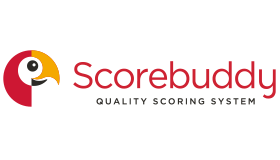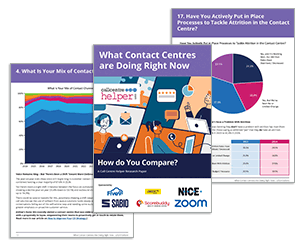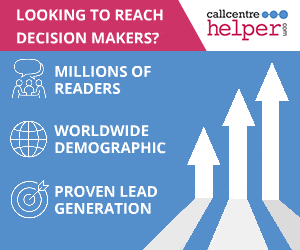This blog summarizes the key points from a recent article by David McGeough at Scorebuddy, where he explores the importance of QA in BPO, its benefits, best practices, and key metrics to help optimize customer service operations.
What Does QA Mean in BPO?
Quality assurance (QA) in BPO ensures customer support consistently meets both client and customer expectations. With 88% of consumers valuing great service more than ever, maintaining high standards is critical.
QA is a structured approach to monitoring, evaluating, and refining interactions to deliver a seamless customer experience (CX). This involves reviewing phone calls, live chats, SMS, and other channels to ensure they meet predefined performance metrics.
For BPOs, strong QA practices are essential. Agents handle diverse inquiries-tech support, billing, product details-while adapting to each client’s brand voice.
Without effective QA, inconsistencies can arise, impacting customer satisfaction and client trust. A solid QA process sets clear goals, tracks SLAs, and provides actionable insights to improve performance.
Key Benefits of QA in BPO
Quality assurance (QA) plays a vital role in BPOs, ensuring service excellence and SLA compliance. Here’s how it benefits your business:
Boost Customer Loyalty
QA helps refine interactions, ensuring agents consistently meet customer needs. High-quality service fosters trust and long-term brand loyalty.
Supports SLA Compliance
Meeting SLAs is crucial in BPO. A strong QA process tracks key metrics like response time and resolution rates to keep performance on target.
Ensures Regulatory Compliance
With ever-changing industry regulations, QA helps maintain compliance, reducing risk and strengthening client confidence.
Reduces Agent Turnover
Regular feedback and targeted training improve job satisfaction, leading to lower turnover rates and a more motivated workforce.
Increases Operational Efficiency
QA identifies inefficiencies, helping streamline workflows, cut costs, and optimize productivity without sacrificing service quality.
Strengthens Brand Reputation
Every customer interaction reflects on your client’s brand. Consistent, high-quality service protects their reputation and helps attract new business.
Best Practices for BPO Quality Assurance
Establish a Strong QA Framework
A solid QA framework is the foundation of effective quality assurance. To maximise impact, define clear objectives, key metrics, and team responsibilities. Set benchmarks for service, compliance, and performance to ensure consistency.
Incorporating client-specific scorecards, regular evaluations, and structured feedback helps enhance agent performance and maintain high customer satisfaction.
Leverage Advanced Technology
The right tools can elevate QA by improving accuracy, efficiency, and scalability. AI-driven analytics, automated call monitoring, and real-time reporting provide valuable insights into agent performance.
These technologies help identify trends, detect compliance risks, and streamline feedback. Integrating QA software with your CRM also enhances customer interactions while automation reduces manual tasks.
Foster Continuous Improvement
QA isn’t a one-time process, it’s an ongoing effort requiring team-wide commitment. Encourage a growth mindset by using QA as a tool for learning, not just assessment.
Start by evaluating current performance, analysing key metrics, and providing constructive feedback. Regular coaching sessions help agents refine their skills, ensuring continuous service improvements over time.
11 Key Metrics for QA in BPO
Tracking essential QA metrics ensures high service standards, better agent performance, and improved customer interactions. Here are the most important ones:
1. Customer Satisfaction (CSAT)
Customer Satisfaction score measures how happy customers are with support. High scores mean great service; low scores indicate areas to improve.
2. Average Handle Time (AHT)
Average Handling Time tracks the time spent on a call, including talk time and post-call work. Optimising AHT helps balance efficiency and service quality.
3. First Call Resolution (FCR)
First Call Resolution is the percentage of issues resolved on the first call. Higher FCR rates reduce repeat contacts and improve the overall customer satisfaction.
4. Net Promoter Score (NPS)
Net Promoter Score gauges customer loyalty based on their likelihood of recommending your service. A higher NPS indicates that a positive customer experience was given.
5. Customer Effort Score (CES)
Customer Effort Score measures how easy it is for customers to get help. Lower effort leads to higher retention and satisfaction.
6. Quality of Service (QOS)
Quality of Service evaluates overall customer support performance using predefined QA criteria to ensure consistency.
7. SLA Adherence
SLA Adherence tracks how well your team meets service agreements, like response and resolution times, impacting client trust.
8. Average Speed of Answer (ASA)
Average Speed of Answer measures how fast agents answer calls. Faster response times lead to better customer experiences.
9. Call Abandonment Rate
Call Abandonment Rate is the percentage of callers who hang up before reaching an agent. High rates suggest long wait times or routing inefficiencies.
10. Agent Turnover Rate
Agent Turnover Rate monitors how often agents leave the company. High turnover affects morale, training costs, and service quality.
11. Agent Occupancy Rate
Agent Occupancy Rate reflects the time agents spend actively handling calls versus being idle. A balanced rate ensures productivity without burnout.
Call Centre QA Checklist for BPOs
Defining QA in BPO doesn’t have to be complicated. A clear, structured plan helps streamline processes and drive improvements.
Our QA checklist template ensures your call centre operates efficiently, meets performance goals, and exceeds client and customer expectations.
This blog post has been re-published by kind permission of Scorebuddy – View the Original Article
For more information about Scorebuddy - visit the Scorebuddy Website
Call Centre Helper is not responsible for the content of these guest blog posts. The opinions expressed in this article are those of the author, and do not necessarily reflect those of Call Centre Helper.
Author: Scorebuddy
Reviewed by: Megan Jones
Published On: 19th Feb 2025
Read more about - Guest Blogs, David McGeough, Scorebuddy






 Scorebuddy is quality assurance solution for scoring customer service calls, emails and web chat. It is a dedicated, stand-alone staff scoring system based in the cloud, requiring no integration.
Scorebuddy is quality assurance solution for scoring customer service calls, emails and web chat. It is a dedicated, stand-alone staff scoring system based in the cloud, requiring no integration. 





























